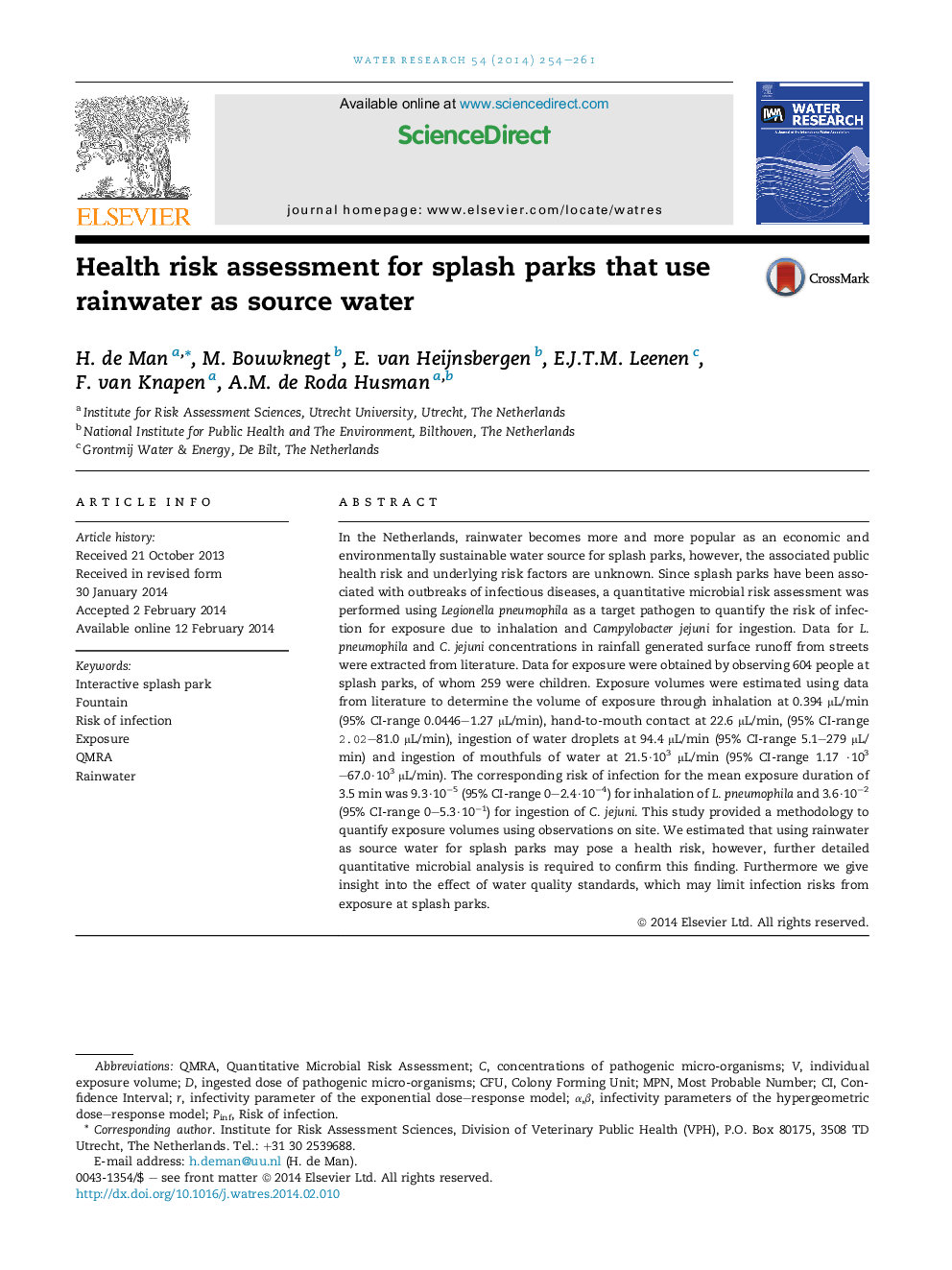| کد مقاله | کد نشریه | سال انتشار | مقاله انگلیسی | نسخه تمام متن |
|---|---|---|---|---|
| 6367080 | 1623114 | 2014 | 8 صفحه PDF | دانلود رایگان |
- A QMRA was performed for splash parks that use rainwater as source water.
- Observations on site were used to quantify exposure volumes for inhalation and ingestion.
- Data for L. pneumophila was used to quantify infection risks for exposure through inhalation.
- Data for C. jejuni was used to quantify infection risks for exposure through ingestion.
- Using rainwater as source water for splash parks may pose a risk for public health.
In the Netherlands, rainwater becomes more and more popular as an economic and environmentally sustainable water source for splash parks, however, the associated public health risk and underlying risk factors are unknown. Since splash parks have been associated with outbreaks of infectious diseases, a quantitative microbial risk assessment was performed using Legionella pneumophila as a target pathogen to quantify the risk of infection for exposure due to inhalation and Campylobacter jejuni for ingestion. Data for L. pneumophila and C. jejuni concentrations in rainfall generated surface runoff from streets were extracted from literature. Data for exposure were obtained by observing 604 people at splash parks, of whom 259 were children. Exposure volumes were estimated using data from literature to determine the volume of exposure through inhalation at 0.394 μL/min (95% CI-range 0.0446-1.27 μL/min), hand-to-mouth contact at 22.6 μL/min, (95% CI-range 2.02-81.0 μL/min), ingestion of water droplets at 94.4 μL/min (95% CI-range 5.1-279 μL/min) and ingestion of mouthfuls of water at 21.5·103 μL/min (95% CI-range 1.17 ·103-67.0·103 μL/min). The corresponding risk of infection for the mean exposure duration of 3.5 min was 9.3·10â5 (95% CI-range 0-2.4·10â4) for inhalation of L. pneumophila and 3.6·10â2 (95% CI-range 0-5.3·10â1) for ingestion of C. jejuni. This study provided a methodology to quantify exposure volumes using observations on site. We estimated that using rainwater as source water for splash parks may pose a health risk, however, further detailed quantitative microbial analysis is required to confirm this finding. Furthermore we give insight into the effect of water quality standards, which may limit infection risks from exposure at splash parks.
Journal: Water Research - Volume 54, 1 May 2014, Pages 254-261
